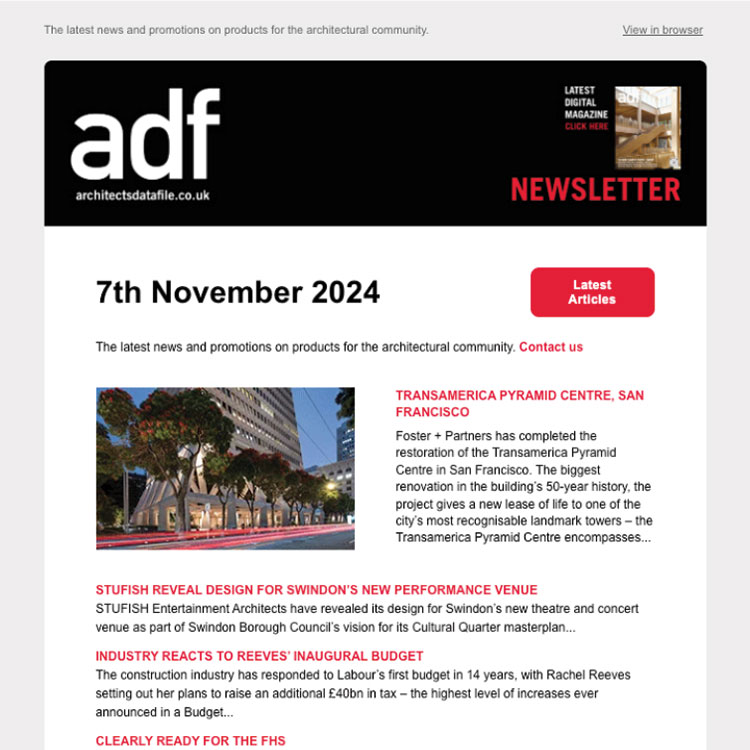Mark Harris of Radmat Building Products explains why the UK needs to increase the uptake of blue roofs and make a major contribution to flood risk alleviation
There is no quick fix for flood risks. Sustainable drainage strategies contribute to rainwater management, flood risk alleviation and deliver other benefits in new build construction, but what about cities, where vast quantities of hard landscaping cannot be replaced by swales and bunds, and where providing below ground attenuation is difficult? The Building Regulations help to ensure that new build construction helps alleviate flood risk, but 98 per cent of the built environment is existing buildings, so what about the flood risk contribution from them? Without regulatory change it is unlikely we will see any positive contribution to flood risk alleviation by buildings in cities and existing buildings, but there is some light at the end of the tunnel. While we are unlikely to see national regulatory change in the near future, the updated London Plan, due for release in 2019, will take a positive step to ensuring London plays a positive role in controlling rainfall and improving drainage, by adding a requirement for rainwater attenuation systems known as blue roofs, There are also positive signs of adoption of this technology from the offices of the new city mayors in Manchester, Birmingham and Sheffield. What difference will the inclusion of blue roofs in the London Plan make? To assess that we need to look back over the impact of the London Plan on the roofing industry and the environment over the past 14 years since its inception and some of the research that went into its development. From a rainwater management perspective, the London Plan partly introduced green roofing as a contributory factor to managing rainwater in the City. This was based in part on looking at regulations in Europe, where green roofs were widely used with the aim of contributing to sustainable drainage. In Germany government buildings were required to have a percentage of their roofs greened, private developers gained additional footprint and insurers reduced premiums. While in Basel, Switzerland, it’s not possible to build without having a green roof.
Blue roofs
Over the past 13 years green roofs have become an everyday sight in London where there are now more green roofs than in any other city in the world. But green roofs still only provide limited flood risk alleviation, a technology that provides a much greater contribution to flood risk alleviation is the blue roof, hence its inclusion in the updated London Plan. Blue roofs consist of a water storage medium, typically a cellular geocomposite drainage or retention board, and a discharge control mechanism. Blue roofs attenuate rainwater rather than drain it as quickly as possible. A correctly designed blue roof releases attenuated water at the required discharge rate for the site, providing the integral source control and attenuation required by a Sustainable Drainage System (SuDS), without the requirement for land consuming ponds and retention basins, or below-ground geocellular storage tanks. Incorporated in an inverted roof construction, the roof elements are installed above the insulation and thermal sheet, and can be finished with a green roof, paving or gravel ballast, providing other benefits for the occupants. Jonathan Ward, an associate director at Arup, summarises the blue roof design as “a flat roof which allows stormwater to be temporarily stored and drain away over a few hours, thereby reducing flood risks.” The roof area doesn’t have to be significant either; a roof of less than 300 m2 can attenuate 94 per cent of the rainfall of a one in 100 year six-hour storm, by draining over a 27 hour period. Blue roofs have been around in one form or another for well over 60 years, and are specifically used for attenuation. Other methods can be used for storage, rain water harvesting or a combination thereof, and roofs can go even further, for example the University of Toronto’s Innovation Complex, which has a zero-runoff roof that incorporates a green roof, wind turbines and solar PV. So why haven’t we built more blue roofs in the UK? The answer probably lies in scepticism, risk aversion, outdated concerns over flat roofing materials durability, and a lack of guidance documents and legislation. Concerns over waterproofing durability can now be eradicated through BBA Certification, which will specifically state whether or not a product is suitable for a blue roof application. Products such as PermaQuik already have BBA Certification for blue roofing. Guidance is going to require a longer term view, industry support and funding. Paul Shaffer of CIRIA (a not for profit research organisation) is currently fundraising the development of a comprehensive blue roof guidance document to support blue roof delivery and help grow the market, something the GLA has committed to part fund, as have a number of companies in the industry. However further support is required to develop this important guidance that will help deal with the scepticism and provide greater confidence in delivery and performance. In the meantime a concise, pan-industry Technical Guidance Note has been published by the NFRC providing a welcome, but simplistic overview. What this fledgling part of the industry needs now is wider commitment to funding the CIRIA guidance; CIRIA has been fundamental in supporting the delivery of sustainable drainage. This guidance could be part of the process to get Government and the environmental regulators (Environment Agency, Scottish Environment Protection Agency, Natural Resources Wales) to look more closely at the positive contributions to flood risk management that blue roofs can have, to both new construction and existing buildings and also help the BRE recognise the positive contribution blue roofing can bring to the BREEAM assessment process.
CIRIA’s Paul Shaffer can be contacted at Paul.Shaffer(Replace this parenthesis with the @ sign)ciria.org for further info on the guidance document project.
Mark Harris is head of technical services at Radmat Building Products


